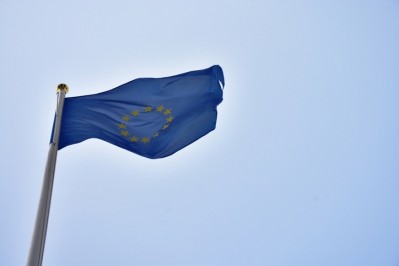Nutreco: New regulation set to transform corporate sustainability reporting

Instead of publishing one comprehensive sustainability report, as it has done in past years, Nutreco will release sustainability results and case studies more frequently throughout the year, on its website, and it will publish a more concise and compliance-focused report later in the year.
“With the Corporate Sustainability Reporting Directive (CSRD) set to change the nature of sustainability reporting in coming years, we felt it made sense to prepare for the time when sustainability reporting will be integrated into financial reporting.
"Moving more information to the website means that we can publish stories and best practices when they happen, instead of waiting for the publication of an annual sustainability report,” Nutreco’s sustainability director, Robert van den Breemer, told FeedNavigator.
In H2 2023, the company created a concrete plan for every business unit, operating company (OpCos) and plant on how to reduce emissions in 2024 and is now implementing these initiatives.
The emissions reduction plan is designed to ensure it can meet its current SBTi target of 30% CO2 emissions reduction by 2030, from a 2018 base year, despite seeing an overall 2,5% increase in Scope 1 and 2 emissions for 2023, which it maintains was due to both a decrease in energy efficiency - CO2 per ton produced - and an increase in sold tons.
“In the first quarter of 2024, we have already seen a 3.5% decrease in Scope 1 and 2 emissions compared to 2023, so we’re pleased that the first results are starting to show,” remarked van den Breemer.
Emissions reduction
The emissions reduction plan covers four main levers: decarbonization, energy efficiency, manure emission reduction and green electricity sourcing. The sustainability lead outlined in greater detail what that entails:
“In the areas of decarbonization and energy efficiency, we have an extensive list of potential options and best practices that our business units are using to bring energy usage down or reduce emissions by changing energy sources. We prioritize large reductions and look closely at each initiative’s potential to ensure we invest wisely.
“In the area of manure emissions reduction, we will be supporting several biogas projects in Iberia in the coming years. Our progress here will be dependent on the readiness of biogas projects currently underway and the proximity of our pig farmers to these projects, which will ensure the manure can be collected efficiently.
“In the area of green electricity, Nutreco operations in five countries - Norway, the US, Canada, Vietnam, and China - are responsible for 80% of the emissions we produce from electricity. We are first working to shift these operations to green electricity and, after that, will focus on the smaller countries that still use grey electricity.
“We have a dedicated team working on all those projects and, in addition, energy and emission reduction is part of all the regular operational efficiency work done across Nutreco.”
Amended performance targets
To further incentivize its employees towards emissions reduction, the company also added scope 1 and 2 emissions to the short-term performance targets for its teams and has started tracking performance in a quarterly update, with clear follow-ups when targets are not met.
Nutreco’s management board also decided to create a Capex fund solely allocated to the reduction of the emissions. In 2024, it is investing €10m in this fund and said it will continue to invest this amount in each of the coming years.
Additionally, the group performed an engineering analysis in 2023 to determine how to build new factories with (net) zero emissions and is using that as the standard for all new factories to be built.
Overcoming hurdles
“While there are many priorities and projects underway in our business, we have made Scope 1 and 2 emissions reduction part of the global target setting and bonus plans for our business units and OpCos, so emission reduction is really a key topic across Nutreco. Clearly there are dependencies: Will the biogas projects in Iberia materialize? Can we get liquid natural gas installations in place in areas where we currently use diesel fuel and electrification is not fully possible? But, given the speed at which we are moving now, with budget available, we will soon be able to tackle a few of these barriers,” remarked van den Breemer.
The €10m Capex fund will be an enormous help, he added.
As regards how Nutreco plans to measure and track progress towards its emissions reduction targets on an ongoing basis, he said:
“We already have a strong process in place. We have measured Nutreco’s energy usage for several years and have also been receiving limited assurance from an auditor. In addition, we track all our energy efficiency projects as part of an operational excellence benefits tracker, ensuring that all local efforts are tracked and followed-up on regularly.”
Asked also about what criteria Nutreco uses to determine which sustainability Capex investments are eligible for funding, van den Breemer reported:
“We are a pragmatic company, so we go for projects that are clearly articulated, can be executed quickly, use proven technology and reduce the most emissions for the lowest financial outlay.”
Scope 3 emissions
Looking ahead, what are Nutreco's goals and priorities for sustainability beyond 2024?
“In 2024, compliance with new regulations, including the EU Deforestation Regulation (EUDR) and the CSRD, are taking priority.
"In addition, while we are already sourcing deforestation free (in line with one of our Roadmap 2025 targets), we are further sharpening our plans to reduce Scope 3 emissions, finding ways to make our value chain less dependent on fossil fuels (around 50% of our Scope 3 emissions come from fossil fuels in the value chain, or, in SBTi terms, are non-FLAG) and reducing land use change.”














